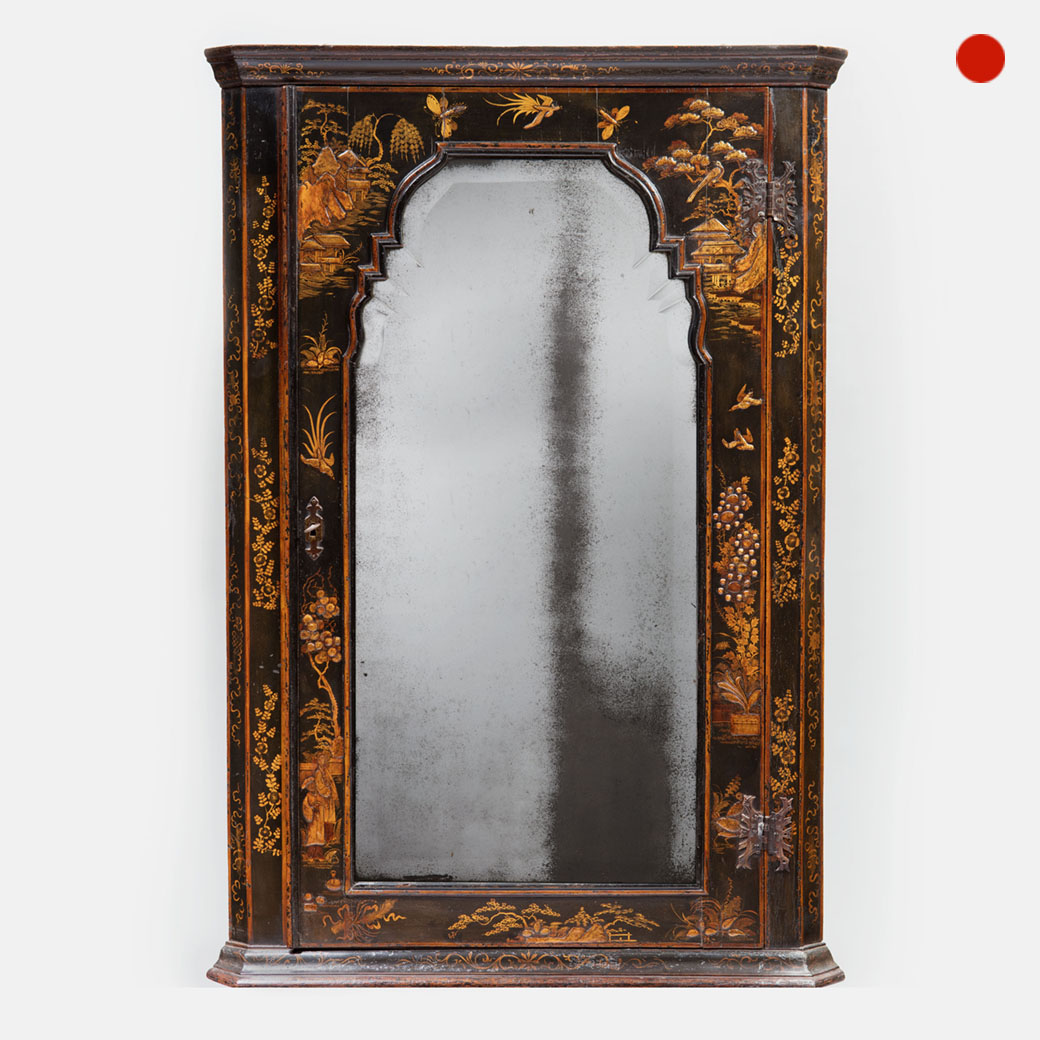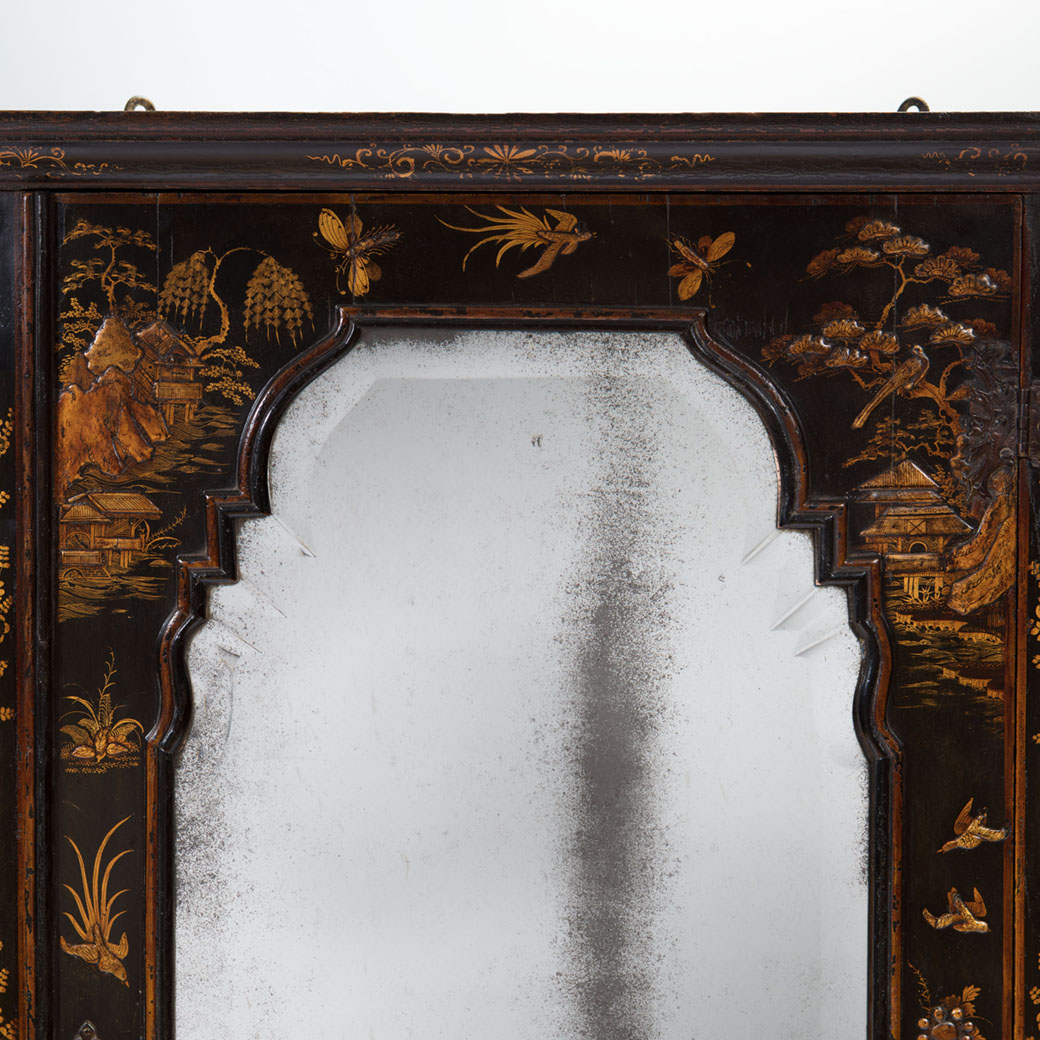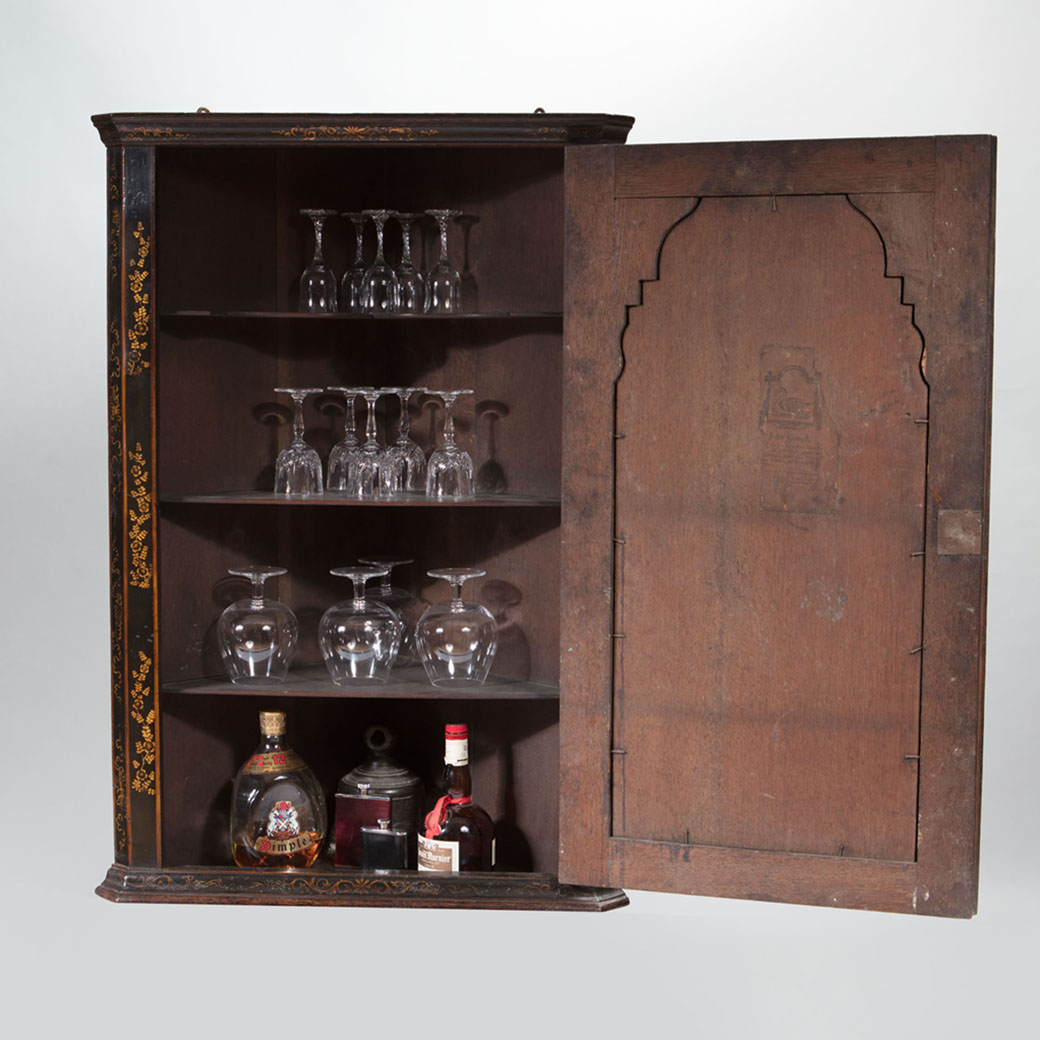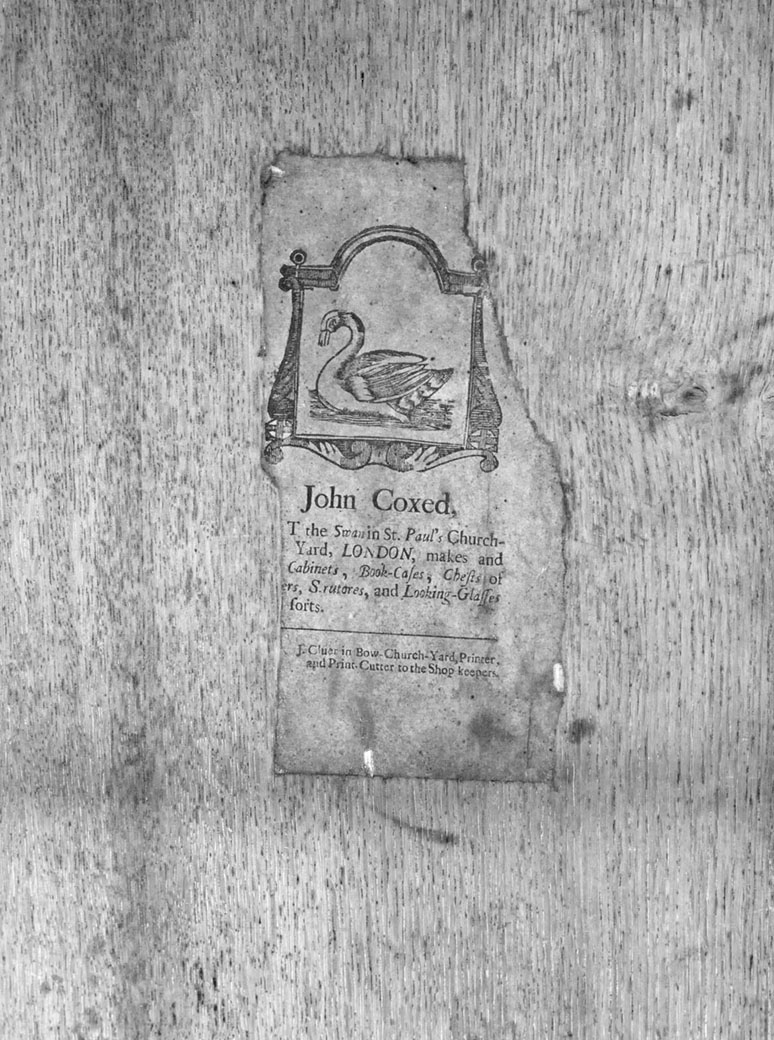JOHN COXED Also known as COXED & WOSTER (worked c.1700-c.1718)
Important Queen Anne Japanned Chinoiserie Corner Cupboard by John Coxed
1711-1715 England
Sold
Request Information
Follow Us
Important Queen Anne Japanned Chinoiserie Corner Cupboard by John Coxed
JOHN COXED Also known as COXED & WOSTER (worked c.1700-c.1718)
1711-1715 England
Important Queen Anne Japanned Chinoiserie Corner Cupboard by John Coxedard
The original bevelled mercury mirror plate is boarded by a double-d moulding and framed by its case of japanned, and detailed chinoiserie designs of differing forms. The chinoiserie work is incredibly fine for the period and includes figural scenes, a cliff face with lapping water, vegetation, insects, and birds to its entirety. The chased escutcheon is original along with the key, lock and opens to an interior of straight and shaped shelves of oak. Directly behind the mirror plate sits the original backboard with the earliest form of John Coxed trade label. The label reads “John Coxed T the Swan in St Pauls Church-Yard London, makes and cabinets, book-cases, chest of drawers, scrutoires, looking glasses, forts.” J. Clue in Bow Church-Yard Printer, and Print-Cutter to the shop keepers.
Six pieces of furniture bearing John Coxed’s labels have so far come to light, and they bear two different styles of label to which this is thought to be the earliest version. This corner cabinet is not only one, of the only now three known examples of the earliest form, but also the only recorded Japanned and chinoiserie piece by John Coxed (1711-1718). It is assumed that this label dates from 1711-1715 and the later version’ from 1715-18. This allows us the rare opportunity to accurately date this unique piece, to sometime between 1711-15.
Typically, Pieces by the outfit are veneered in walnut, mulberry or burr elm and stained to resemble tortoiseshell. Some pieces are embellished with kingwood cross-banding and pewter stringing. This metal line inlay was almost certainly due to the influence of Gerrit Jensen, who introduced such fashionable Continental habits into England in the late 17th century.
All known pieces by Coxed and Woster are in important private collections and museums, to include, The V&A Museum, Colonial Williamsburg, Rousham House and Alexander George Fine Antiques Ltd.
John Belchier also operated from the Southside of St Pauls Churchyard, just a few doors down from Coxed in the first quarter of the 18th century. The earliest reference to John Belchier can be found in the accounts of Boughton House between 1687 and 1710. Belchier is most famous for his Chinoiserie work and it is possibly or even highly likely that it was he who undertook the chinoiserie work of the corner cabinet we are offering.
Condition
Original condition
Dimensions
Height 38.00 inch (96.52 cm)
Width 26.00 inch (66.04 cm)
Depth 14.50 inch (36.83 cm)
Provenance
Private London collection
Literature
The trade label from this corner cupboard is illustrated in the ‘Pictorial Dictionary Of Marked London Furniture, 1700- 1840’, page 153, fig 236, by leading furniture historian Christopher Gilbert.
Dictionary Of English Furniture Makers 1660-1840, by The Furniture History Society, page 205.
PREVIOUSLY SOLD
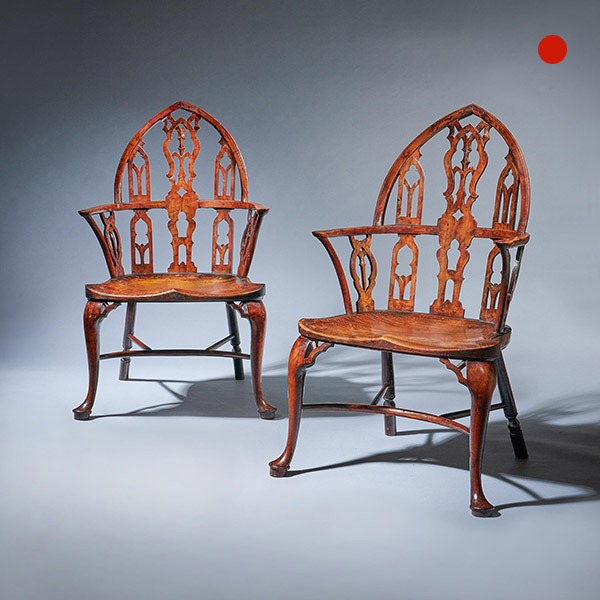
Pair of 18th Century George II Gothic Yew and Elm Windsor Armchairs, circa 1760
Pair of 18th Century George II Gothic Yew and Elm Windsor Armchairs, circa 1760 SoldFollow UsPair of 18th Century George II Gothic Yew and Elm Windsor Armchairs, circa 1760 The Windsor chair at its most elaborate and fine, the Gothic Windsor...
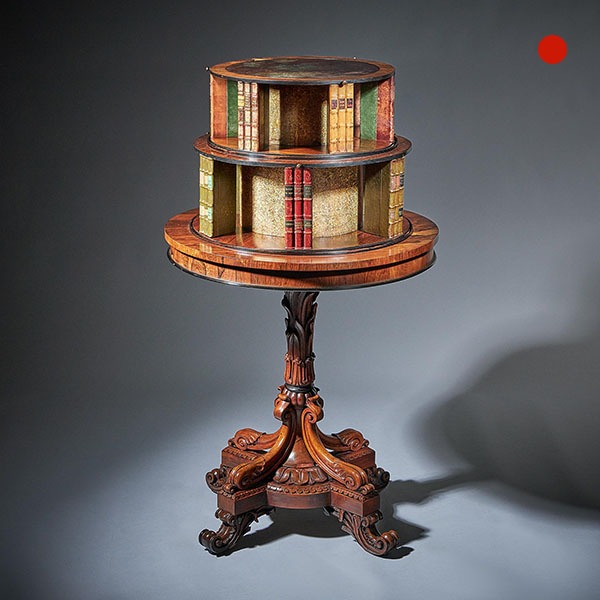
A Fine and Rare William IV Rosewood Revolving Library Bookcase Stamped P Westmacott
A Fine and Rare William IV Rosewood Revolving Library Bookcase Stamped P Westmacott SOLD[wpforms_selector form_id="11387" show_title="on" _builder_version="4.22.1" _module_preset="default" custom_margin="-30px||||false|false"...
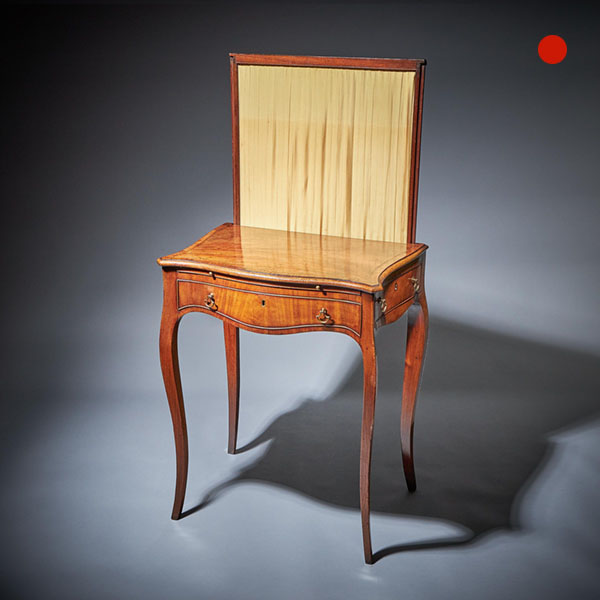
18th Century George III Chippendale Mahogany and Tulipwood Writing Table, C1770
18th Century George III Chippendale Mahogany and Tulipwood Writing Table, C1770 SoldFollow Us18th...
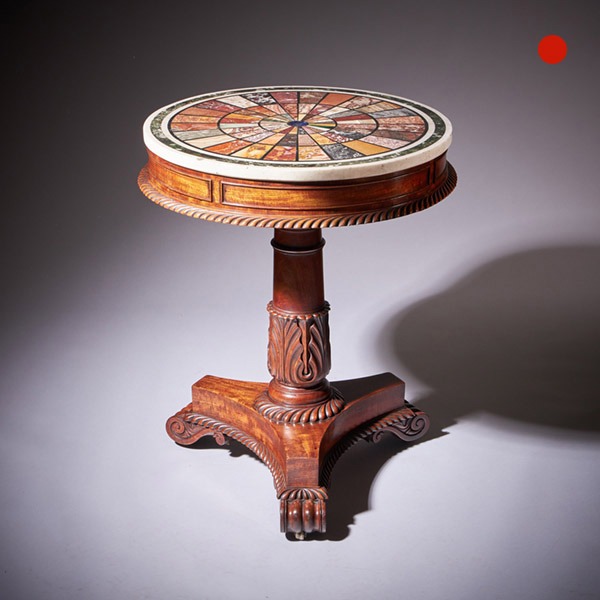
A Gillows George IV Regency Carved Mahogany Grand Tour Specimen Marble Table
A Gillows George IV Regency Carved Mahogany Grand Tour Specimen Marble Table SoldFollow UsA...
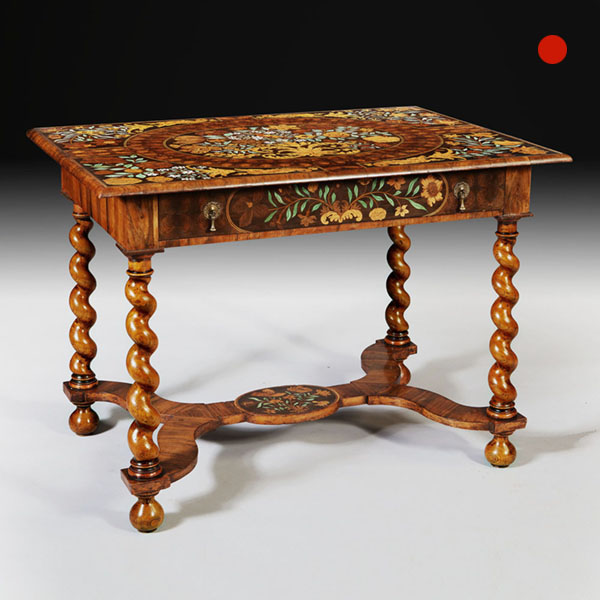
Charles II Olive Oyster Floral Marquetry Table
Attributed to GERRIT JENSEN (worked c.1680-1715) Charles II Olive Oyster Floral Marquetry Table 1680 to 1683 England Sold[wpforms_selector form_id="11387" show_title="on" _builder_version="4.22.1" _module_preset="default"...

A Fine 18th Century George II Mahogany Pie-Crust Tripod Table, Circa 1750
A Fine 18th Century George II Mahogany Pie-Crust Tripod Table, Circa 1750 Sold[wpforms_selector form_id="11387" show_title="on" _builder_version="4.22.1" _module_preset="default" custom_margin="-30px||||false|false" global_colors_info="{}"...

Pair of 18th Century George II Gothic Yew and Elm Windsor Armchairs, circa 1760
Pair of 18th Century George II Gothic Yew and Elm Windsor Armchairs, circa 1760 SoldFollow UsPair of 18th Century George II Gothic Yew and Elm Windsor Armchairs, circa 1760 The Windsor chair at its most elaborate and fine, the Gothic Windsor...

A Fine and Rare William IV Rosewood Revolving Library Bookcase Stamped P Westmacott
A Fine and Rare William IV Rosewood Revolving Library Bookcase Stamped P Westmacott SOLD[wpforms_selector form_id="11387" show_title="on" _builder_version="4.22.1" _module_preset="default" custom_margin="-30px||||false|false"...

18th Century George III Chippendale Mahogany and Tulipwood Writing Table, C1770
18th Century George III Chippendale Mahogany and Tulipwood Writing Table, C1770 SoldFollow Us18th...

A Gillows George IV Regency Carved Mahogany Grand Tour Specimen Marble Table
A Gillows George IV Regency Carved Mahogany Grand Tour Specimen Marble Table SoldFollow UsA...

Charles II Olive Oyster Floral Marquetry Table
Attributed to GERRIT JENSEN (worked c.1680-1715) Charles II Olive Oyster Floral Marquetry Table 1680 to 1683 England Sold[wpforms_selector form_id="11387" show_title="on" _builder_version="4.22.1" _module_preset="default"...

A Fine 18th Century George II Mahogany Pie-Crust Tripod Table, Circa 1750
A Fine 18th Century George II Mahogany Pie-Crust Tripod Table, Circa 1750 Sold[wpforms_selector form_id="11387" show_title="on" _builder_version="4.22.1" _module_preset="default" custom_margin="-30px||||false|false" global_colors_info="{}"...
YOU MAY ALSO LIKE
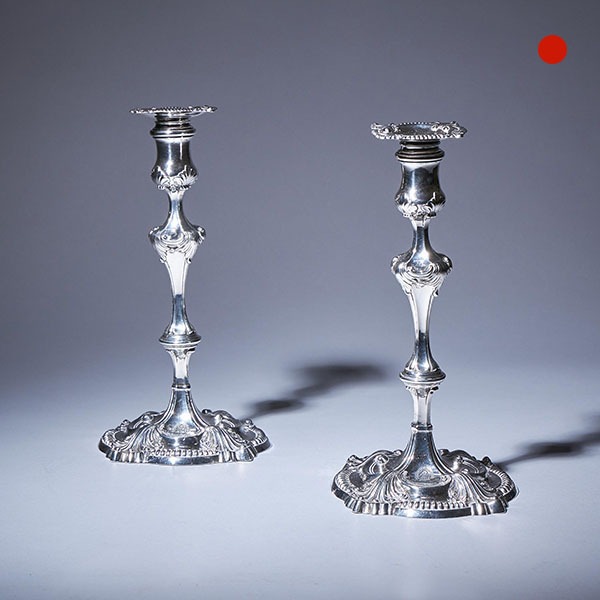
Pair of 18th Century George III Silver Candlesticks by David Bell, London, 1762
Pair of 18th Century George III Silver Candlesticks by David Bell, London, 1762 Sold[wpforms_selector form_id="11387" show_title="on" _builder_version="4.22.1" _module_preset="default" custom_margin="-30px||||false|false"...
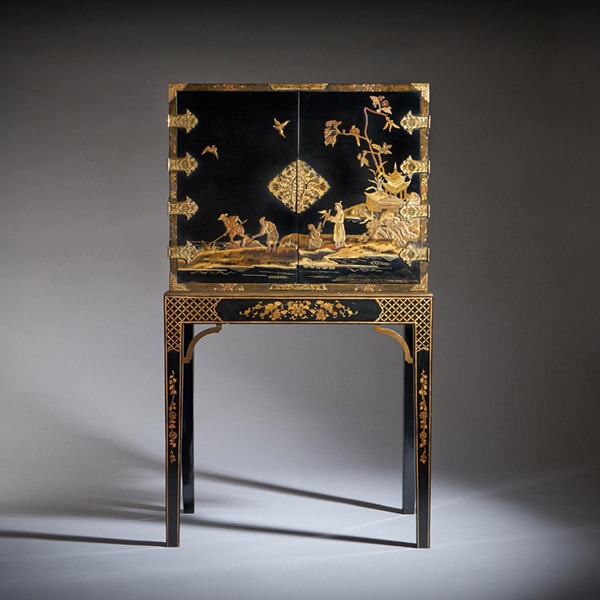
A Rare and Fine George III 18th Century Chinoiserie Lacquer Cabinet on Stand
A Rare and Fine George III 18th Century Chinoiserie Lacquer Cabinet on Stand £28,000Follow UsA...
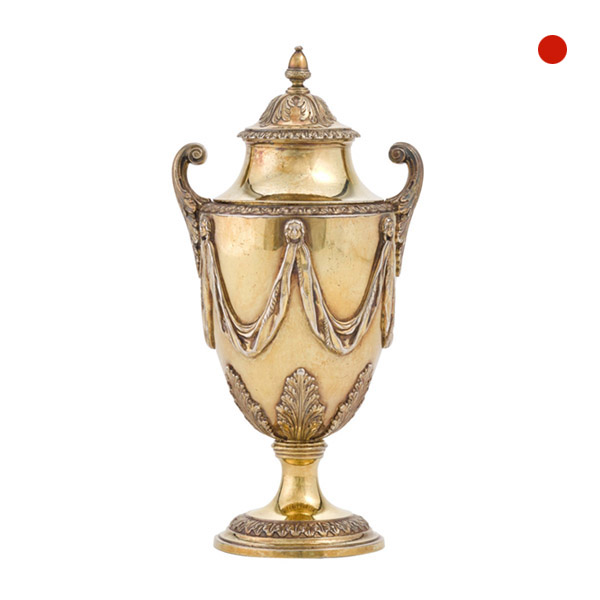
Robert Adam George III Silver Gilt Vase by Daniel Smith and Robert Sharp London
Robert Adam George III Silver Gilt Vase by Daniel Smith and Robert Sharp London Sold[wpforms_selector form_id="11387" show_title="on" _builder_version="4.22.1" _module_preset="default" custom_margin="-30px||||false|false"...
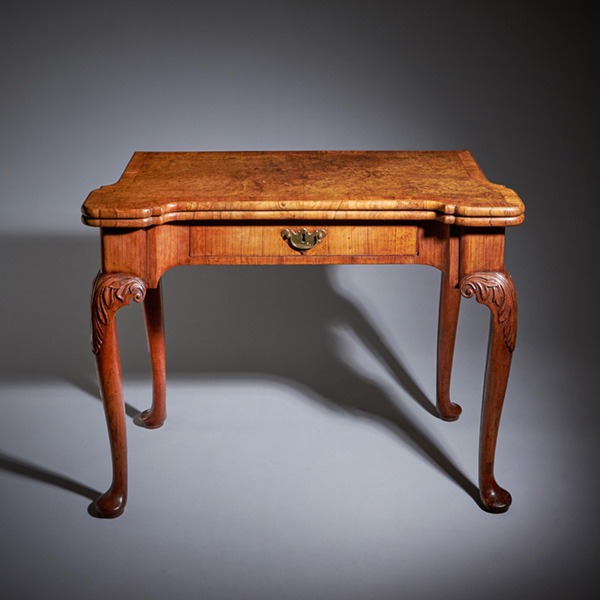
An Elegant and Rare George II Pollard Oak and Walnut Card Table, Circa 1740
An Elegant and Rare George II Pollard Oak and Walnut Card Table, Circa 1740 £15,900Follow UsAn...
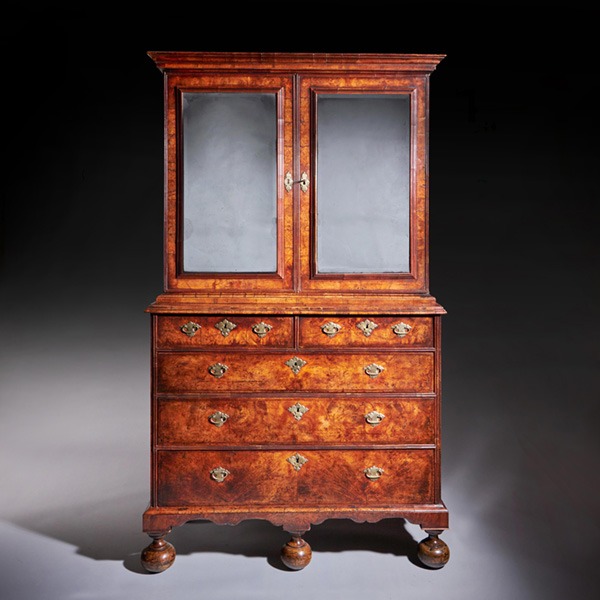
18th Century Queen Anne Burr Walnut mirrored Cabinet on Chest, Circa 1705-1715
18th Century Queen Anne Burr Walnut mirrored Cabinet on Chest, Circa 1705-1715 £32,900Follow...
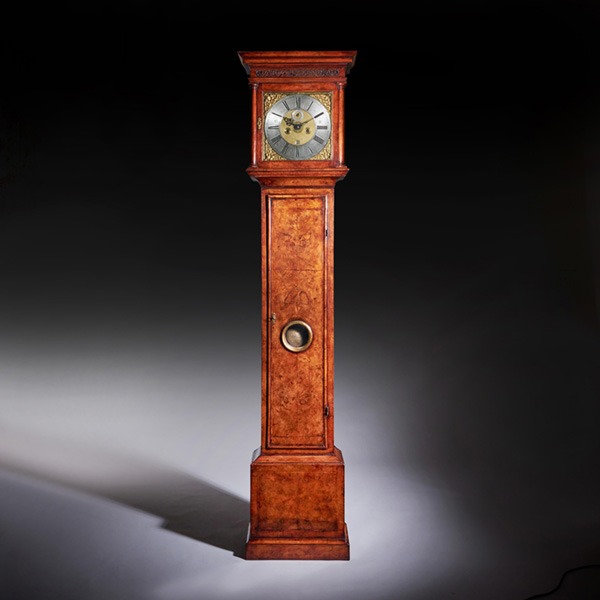
Fine 18th Century Queen Anne Burr Walnut Eight-Day Longcase Clock
Fine 18th Century Queen Anne Burr Walnut Eight-Day Longcase Clock £12,500Follow UsFine 18th...

Pair of 18th Century George III Silver Candlesticks by David Bell, London, 1762
Pair of 18th Century George III Silver Candlesticks by David Bell, London, 1762 Sold[wpforms_selector form_id="11387" show_title="on" _builder_version="4.22.1" _module_preset="default" custom_margin="-30px||||false|false"...

A Rare and Fine George III 18th Century Chinoiserie Lacquer Cabinet on Stand
A Rare and Fine George III 18th Century Chinoiserie Lacquer Cabinet on Stand £28,000Follow UsA...

Robert Adam George III Silver Gilt Vase by Daniel Smith and Robert Sharp London
Robert Adam George III Silver Gilt Vase by Daniel Smith and Robert Sharp London Sold[wpforms_selector form_id="11387" show_title="on" _builder_version="4.22.1" _module_preset="default" custom_margin="-30px||||false|false"...

An Elegant and Rare George II Pollard Oak and Walnut Card Table, Circa 1740
An Elegant and Rare George II Pollard Oak and Walnut Card Table, Circa 1740 £15,900Follow UsAn...

18th Century Queen Anne Burr Walnut mirrored Cabinet on Chest, Circa 1705-1715
18th Century Queen Anne Burr Walnut mirrored Cabinet on Chest, Circa 1705-1715 £32,900Follow...

Fine 18th Century Queen Anne Burr Walnut Eight-Day Longcase Clock
Fine 18th Century Queen Anne Burr Walnut Eight-Day Longcase Clock £12,500Follow UsFine 18th...



